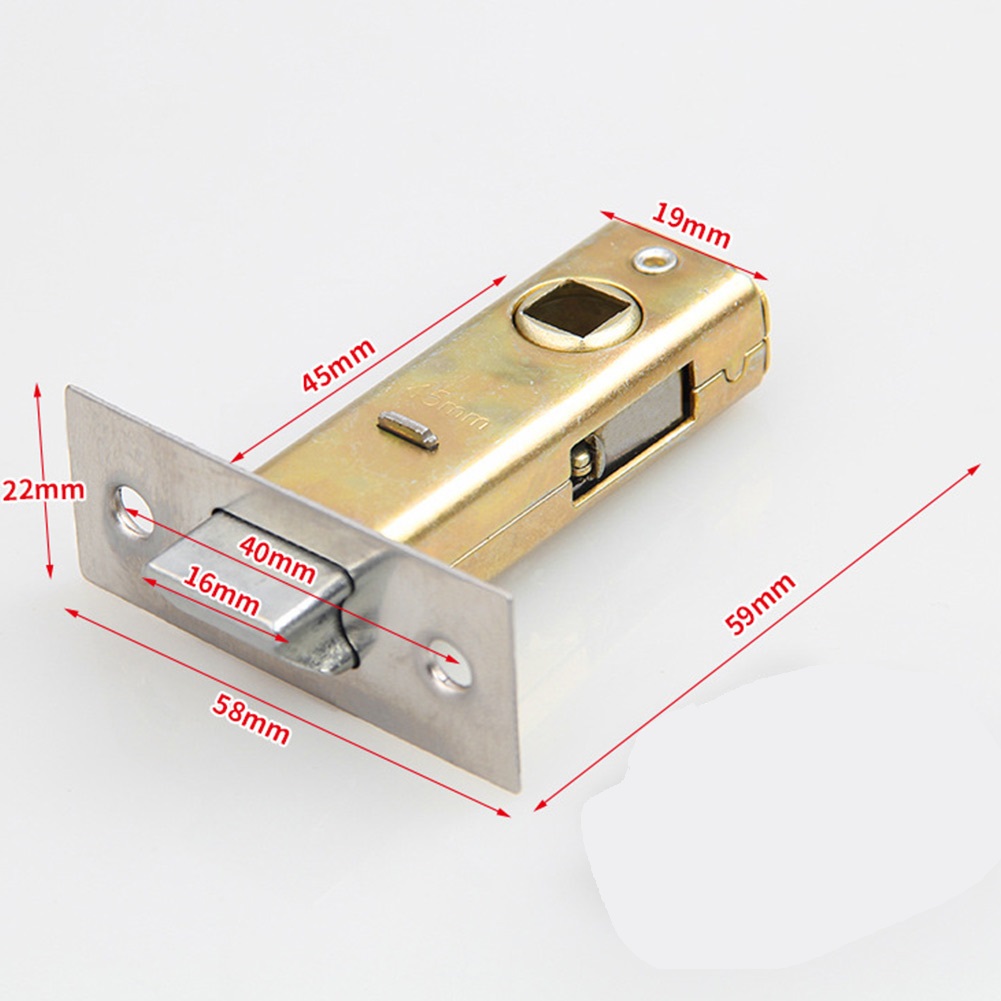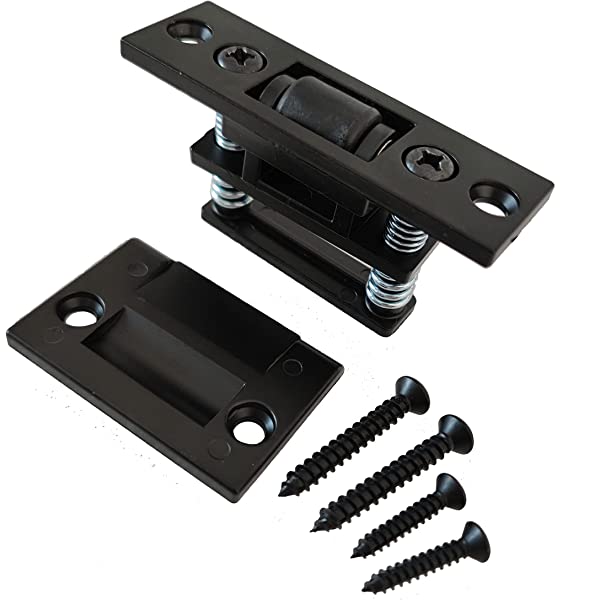Different types of door latches offer similar functionality, but there is a wide variety for consumers to choose from. It is crucial to understand the available latch types to select the most suitable one for your requirements.
Door latches can be categorized into two main groups based on installation: internal and external. Despite their core functionality being similar, each category offers distinct features and functions within its various latch types.
The abundance of latch options can make finding the right one for your needs overwhelming. However, our comprehensive guide to the different latch types will enable you to differentiate between them and make an informed choice!
Purpose of Door Latches
A closed door with different latches
Before delving into the various types of door latches, it is essential to understand how these mechanical devices work. While there is a range of options to choose from, they do have some limitations.
The primary purpose of a door latch is to secure a door or gate in place. It is a fastening device that prevents the door or gate from opening. However, it does not provide high-level security. This is where the distinction between latches and locks becomes important!
Due to their similar appearance and functionality, door latches and door locks are often confused. A door lock is specifically designed to prevent unauthorized access by requiring a key. In contrast, a latch keeps the door closed but does not have a locking mechanism. Understanding this distinction is crucial when selecting the right latch, as these devices are often used together to secure and lock a door.
However, in many cases, a latch alone is sufficient for doors and gates that do not require extra security. There are specific situations where a lock is unnecessary or undesirable, and a well-suited latch is all that is needed to fasten a door or gate securely.
Types of Door Latches
In general, door latches can be divided into two main categories based on their installation method. Let’s first explore the internal door latch types before moving on to the wide array of external door latch options!
Internal Door Latches
As mentioned earlier, we will begin by examining internal door latches. These latches are typically installed within the door or gate structure and provide secure fastening when closed.
Tubular Latches

Tubular latches, also known as mortice latches, are one of the most commonly used types. They are installed by morticing them into the door itself. This allows the latch to be operated with a doorknob or door handle.
When you engage the knob or handle, you can open or close the door. Tubular latches are widely preferred by homeowners for internal doors. They come in various options, differing in quality and features.
Economy tubular latches are the most affordable but have a shorter lifespan compared to other types. Standard tubular latches have a similar design but offer better quality. Double-sprung and heavy-sprung tubular latches are the strongest and most durable variants of this latch type.
The video below provides a brief explanation of installing a tubular latch, which is similar to installing other internal door latches.
Flat Latches
Flat latches are similar to tubular latches as they are embedded in the door structure. They function similarly to tubular latches but are commonly used in heavy-duty doors that do not require a locking mechanism.
Flat latches are controlled by a handle, just like tubular latches. You can find them in various sizes, materials, and finishes to suit your specific needs.
Roller Bolt Latches
Roller bolt latches, like other internal door latches, are embedded within the door structure. They come in different sizes and materials, such as brass and stainless steel.
The main difference between roller bolt latches and other internal latch types lies in their functionality. While the aforementioned latches require engaging a handle or knob, roller bolt latches allow you to simply pull the door open. The roller mechanism can be adjusted to control the pressure required to open the door, and when closed, the latch securely keeps the door in place. Roller bolt latches are commonly found in wardrobe doors.
Spring-Loaded Latches

Spring-loaded latches are a popular choice for internal use due to their convenience. They use a compressed spring to secure a door. While they are considered heavy-duty latches commonly used in the automotive industry, they are also suitable for doors and windows.
These latches come in various sizes and materials, with stainless steel being a commonly used option. They function similarly to traditional deadlocks but are not locking mechanisms themselves. Nevertheless, spring-loaded latches are highly effective and easy to use.
External Door Latches
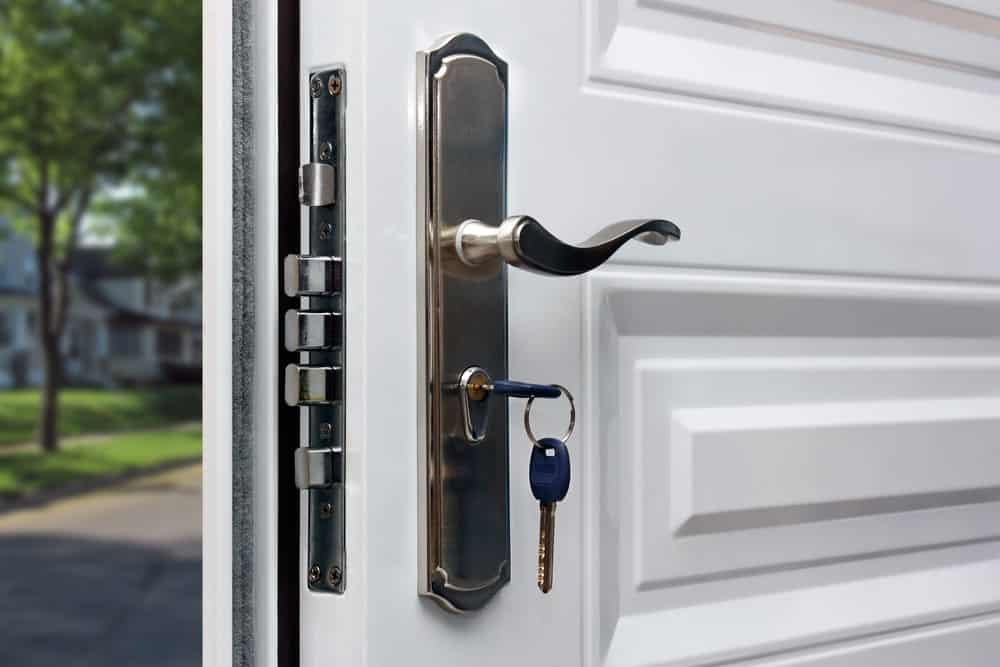
Moving on to external door latches, which are attached to the door and frame, there is a wide range of options available. While some are commonly used indoors, many find their place outside the home as well. Installing an external door latch is a straightforward process, making it ideal for those in need of a latch.
Sliding Bolt Latches

Bolt latches are a popular choice among homeowners. These latches use a metal bolt or lock to securely fasten a door or gate. To unlock the latch, you simply slide the metal bolt to one side. To close the door or gate, the bolt is used to fasten it.
Many bolt latches do not include a built-in locking mechanism and can be easily opened by sliding the bolt. However, certain types of bolt latches can accommodate a padlock, adding an extra layer of security.
When browsing sliding bolt latches, you will find a variety of options in terms of size and material. Similar to internal door latches, there are two components: the main fixture with the sliding rod attached to the gate or door, and an additional piece attached to the frame that holds the bolt when closed.
Rim Latches
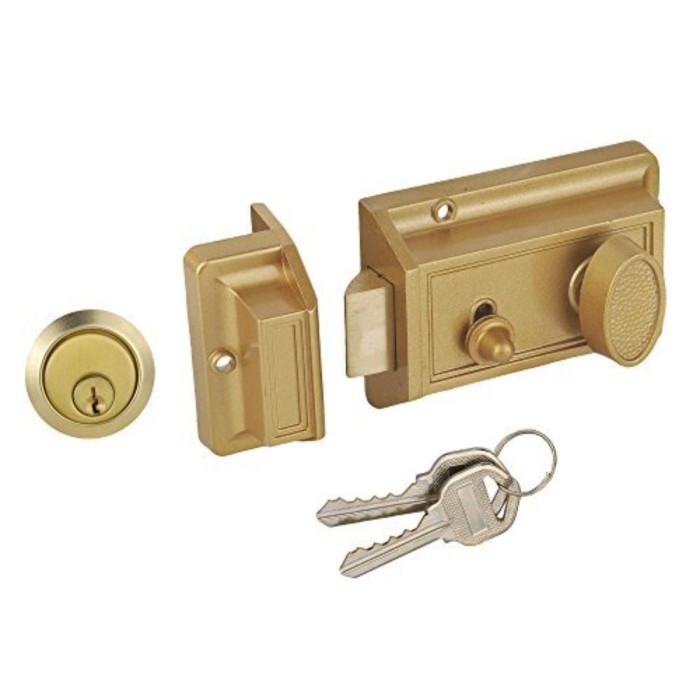
Rim latches are commonly used indoors and resemble tubular or flat latches with knob handles. However, these latches are mounted on the outside of a door, making them less secure than morticed door latches embedded within the door frame.
Many rim latches feature doorknobs or a cylinder lock mechanism. Rim locks, which fall under the same category, utilize the same mechanism but can be locked for added security.
While rim locks are not considered highly secure as door locks, they work perfectly as latches for doors that do not require locking. They are available in different styles and materials, including bronze, brass, and iron.
Hook & Eye Latches
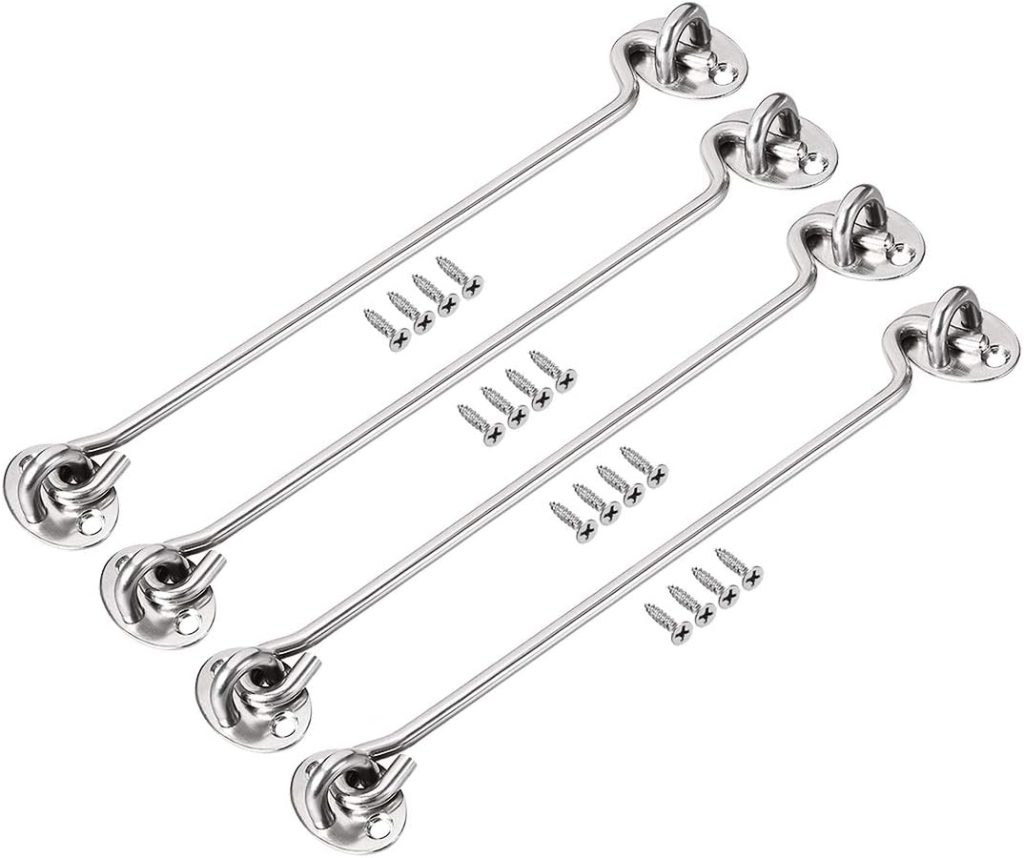
Hook and eye latches are commonly used on gates and offer simplicity and effectiveness, especially for outdoor applications. They are often referred to as barn door hooks
due to their practicality. These latches consist of two separate components: an attachment with a hook that is installed on the gate and an eye that is attached to the frame. When the hook is inserted into the eye, the gate is securely fastened. The installation process for these latches is straightforward.
When choosing a hook and eye latch, it is important to ensure compatibility in terms of size. Additionally, there are various material and color options available, allowing you to customize the appearance of the latch. These latches have versatile applications around the home.
Chain Latches
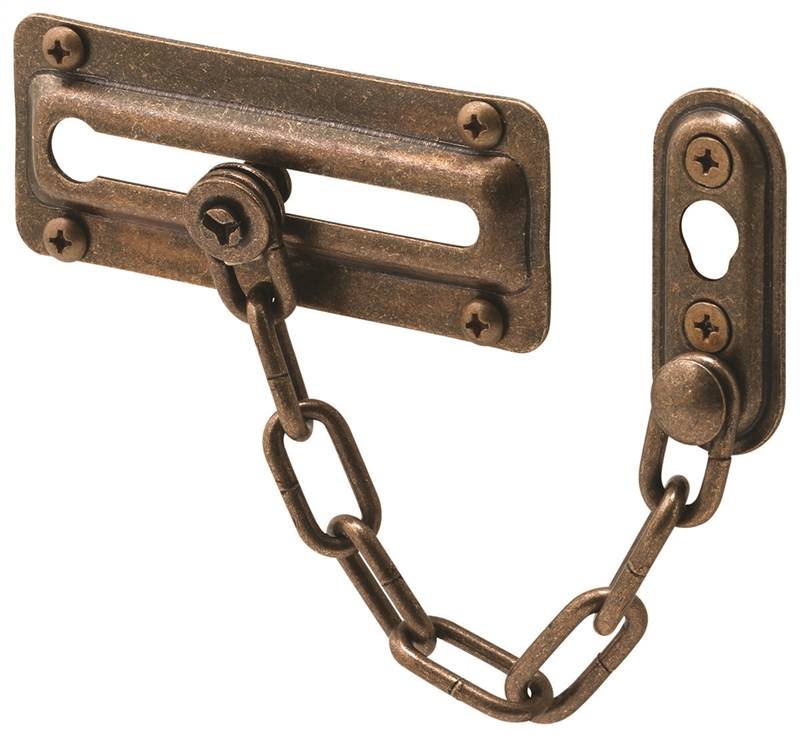
Chain latches are a popular choice among homeowners and offer a distinctive design. Unlike other latches, they are not commonly used as the primary securing mechanism for a door. Instead, they are often combined with other latches or locking mechanisms.
Chain latches serve a specific purpose. They consist of two components: a track that is attached to the door and a chain that is attached to the frame. When the chain’s end is inserted into the track’s slot, the door can be secured. With the chain latch engaged, the door can be slightly opened for communication or observation without fully opening it. This functionality makes chain latches popular for certain door applications.
Swing-Bar Latches
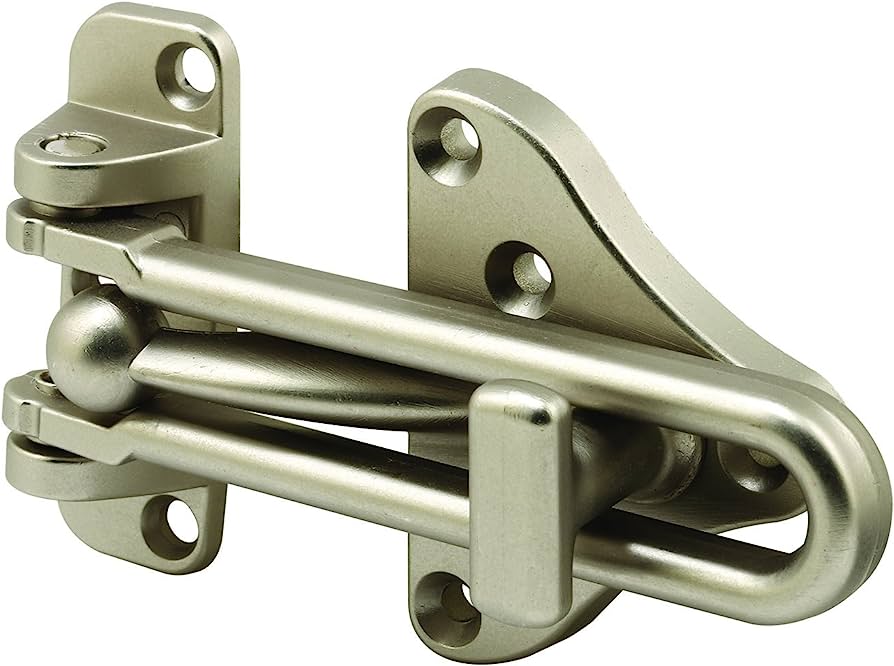
Swing-bar latches are replacing chain latches as a more modern option for external door latches. Many homeowners are switching to swing-bar latches due to the added security they provide. Similar to chain latches, swing-bar latches are often used in conjunction with other locking mechanisms like deadbolts.
Swing-bar latches consist of two parts: a swing bar installed on the door frame and a peg on the door that engages with the swing bar. This design allows the door to be slightly opened without fully unlocking it. When it comes to overall security, swing-bar latches are considered safer than chain latches. Unlike chain latches, swing-bar latches are more difficult to force open. If you are considering between a chain latch and a swing-bar latch, it is recommended to choose the modern swing-bar latch.
Gravity Latches
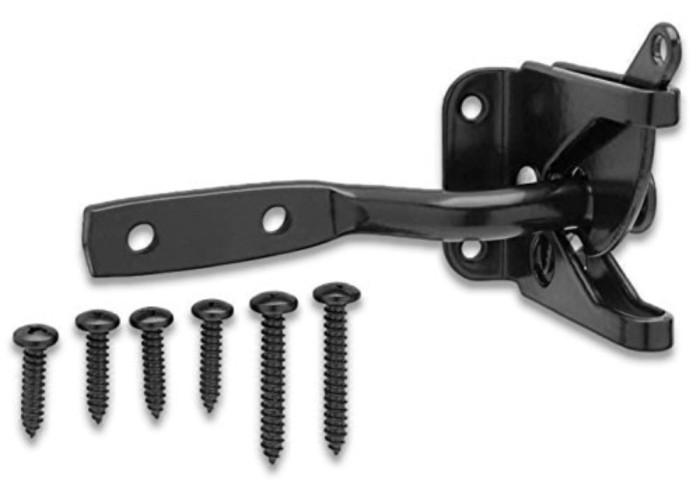
Gravity latches are unique door latches that prioritize convenience. These latches are designed to be self-latching due to gravity. When you swing the gate closed, the latch mechanism automatically engages and secures the gate.
The installation of gravity latches involves attaching two components. The striker is installed on the gate itself, while the latch mechanism is installed on the frame. When the gate is swung closed, the striker makes contact with the mechanism, causing it to self-latch.
Many gravity latches are compatible with padlocks, allowing for additional locking. Homeowners often use these latches on short gates to keep pets or children in a specific area of the home. On short gates, the latches can be unlocked from either side, while on tall gates, they can only be operated from one side.
Ring Latches
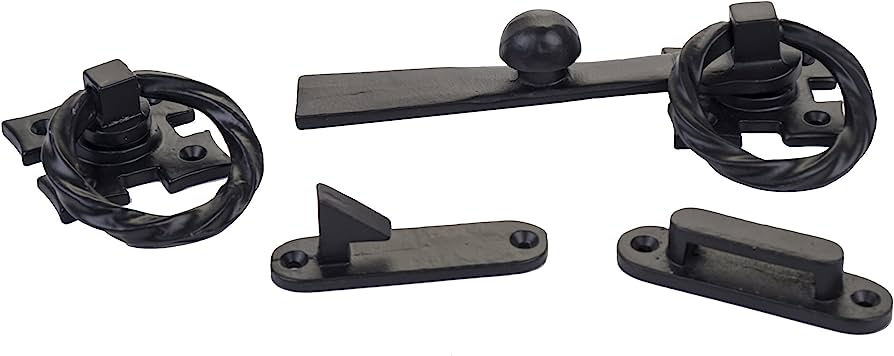
Ring latches are a popular choice among homeowners, particularly for backyard gates, due to their dual-sided engagement functionality. While the latch is installed on one side of the gate or door, it can be engaged from both sides using a ring-like handle. This feature makes ring latches highly convenient.
While engaging the latch from either side is possible, the gate can only be closed from the side where the latch is installed. Ring latches are often compatible with padlocks, allowing for added security when required. There is a wide variety of ring latches available, offering choices that suit different budgets and styles. To better understand the installation process of this type of door latch, you can refer to the following video.
Thumb Latches
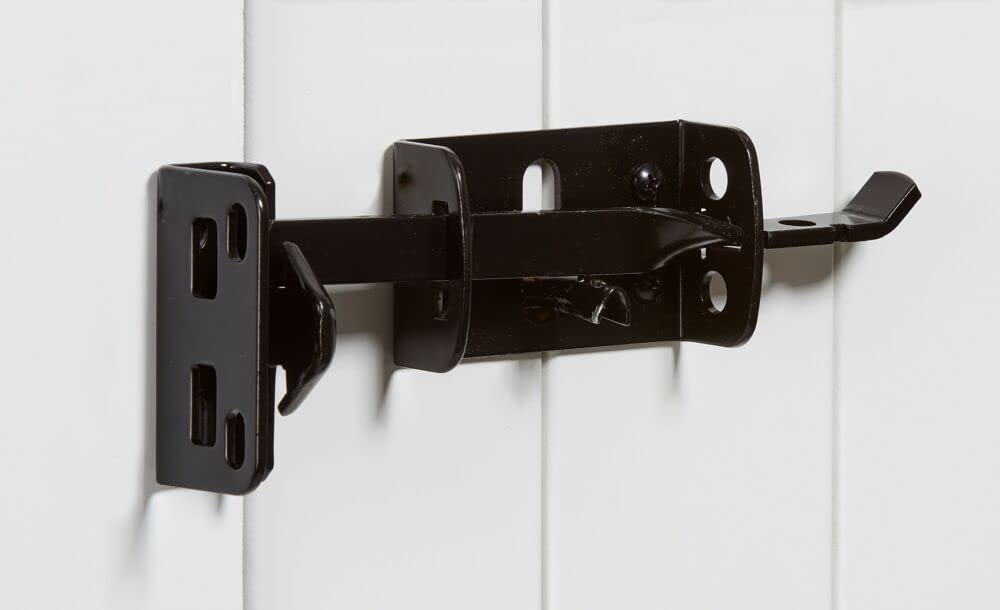
Thumb latches combine features of both gravity latches and ring latches. On the outside of the gate, there is a metal plate with a thumb depressor mechanism. On the inside, a latch mechanism with a securing lever is installed.
When you depress the thumb mechanism, it opens the lever on the other side of the gate, allowing you to open or close the gate. The gate can also be opened from the side where the latch is installed. The closing mechanism of thumb latches is similar to that of gravity latches, as the gate self-latches when swung closed.
Thumb latches are available in latch-only versions and variants that can be locked. They are suitable for various applications and provide a balance of convenience and security.
Night Latches
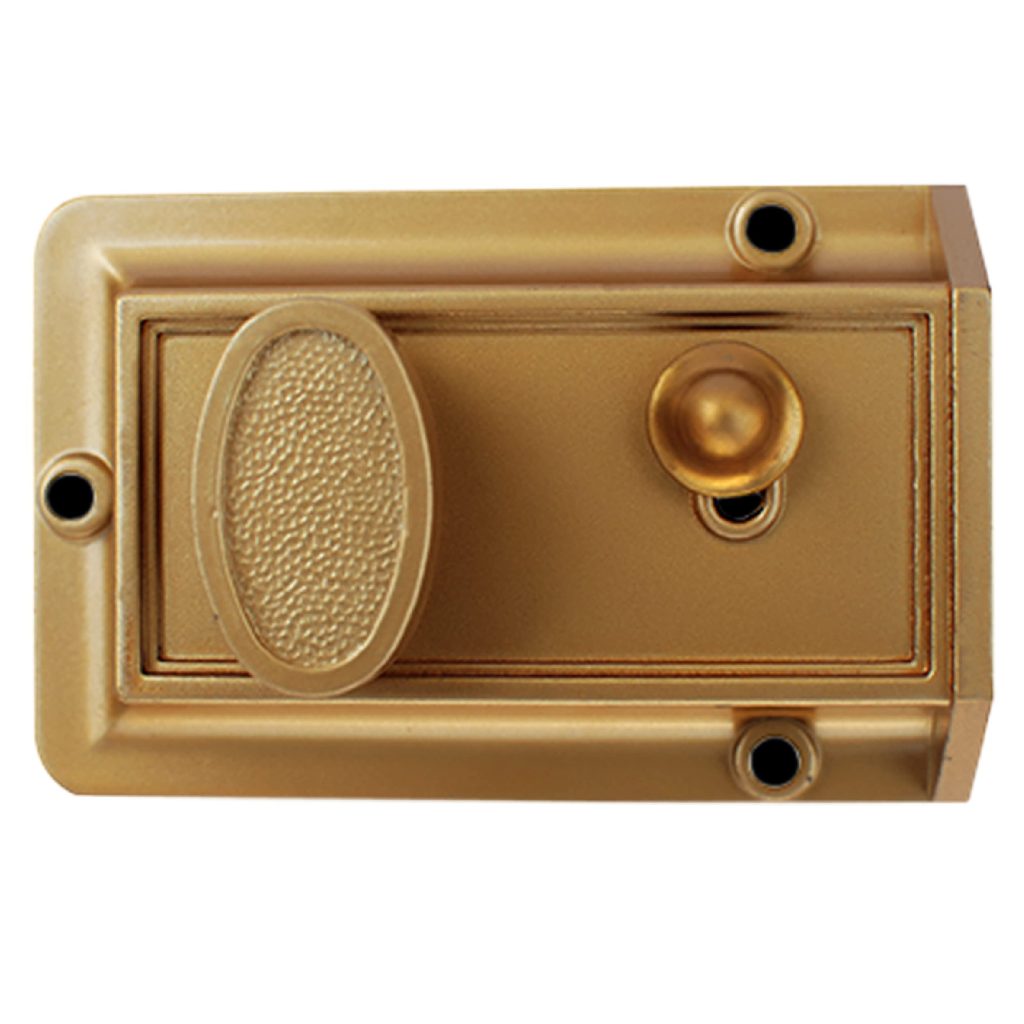
Night latches offer a high level of security, bordering on that of door locks. These latches are installed on the exterior surface of the door and frame. In terms of appearance, night latches resemble rim latches discussed earlier.
Night latches are often used in conjunction with other latches or locking mechanisms. However, they provide an additional layer of security for doors. These latches come in various materials and colors, including brass, chrome, and nickel.
On the inside of the door, there is a latch mechanism with a knob that can be turned to unlock it from the inside. From the outside, a key is required to engage the latch. Night latches are commonly added to front doors in residential homes.
Choosing Latch Materials
Having outlined the various types of door latches available, it is also important to consider the materials used. The material choice significantly impacts the latch’s functionality and appearance. To assist you in choosing the right material for your latch, we have provided a guide to the most commonly used materials:
Aluminum

Aluminum is a lightweight material commonly used for door latches. It offers durability and resistance to rust. However, due to its lightweight nature, aluminum latches may be more fragile compared to other materials. Aluminum is also one of the most affordable latch materials, making it a budget-friendly option.
Brass
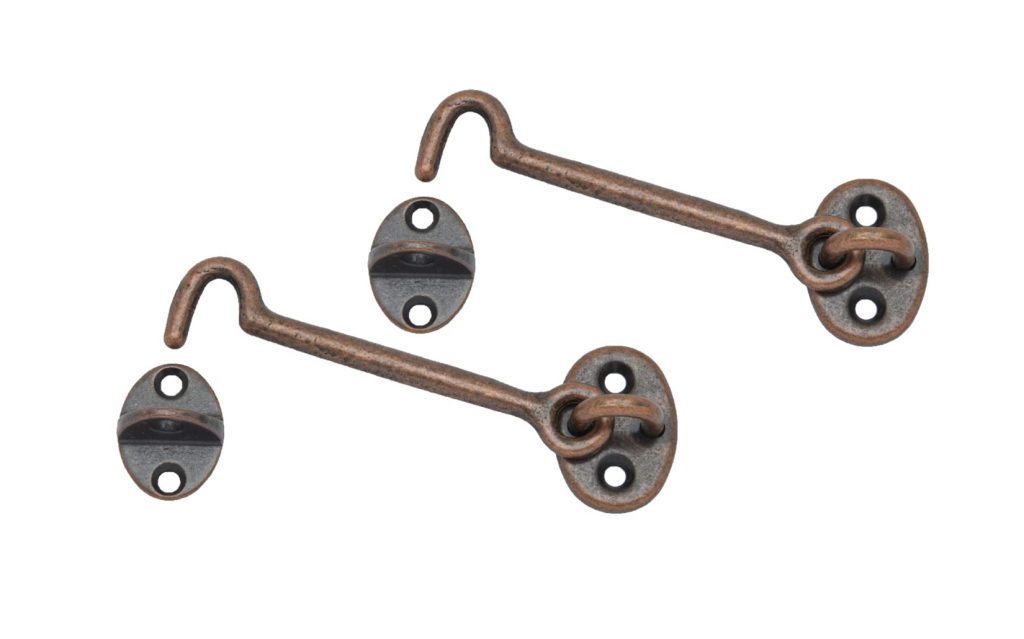
Brass is not commonly used for door latches, and availability may vary depending on your location. Many homeowners choose brass for its stunning appearance, which enhances the overall design of their homes. However, brass requires regular polishing to maintain its appearance.
Bronze
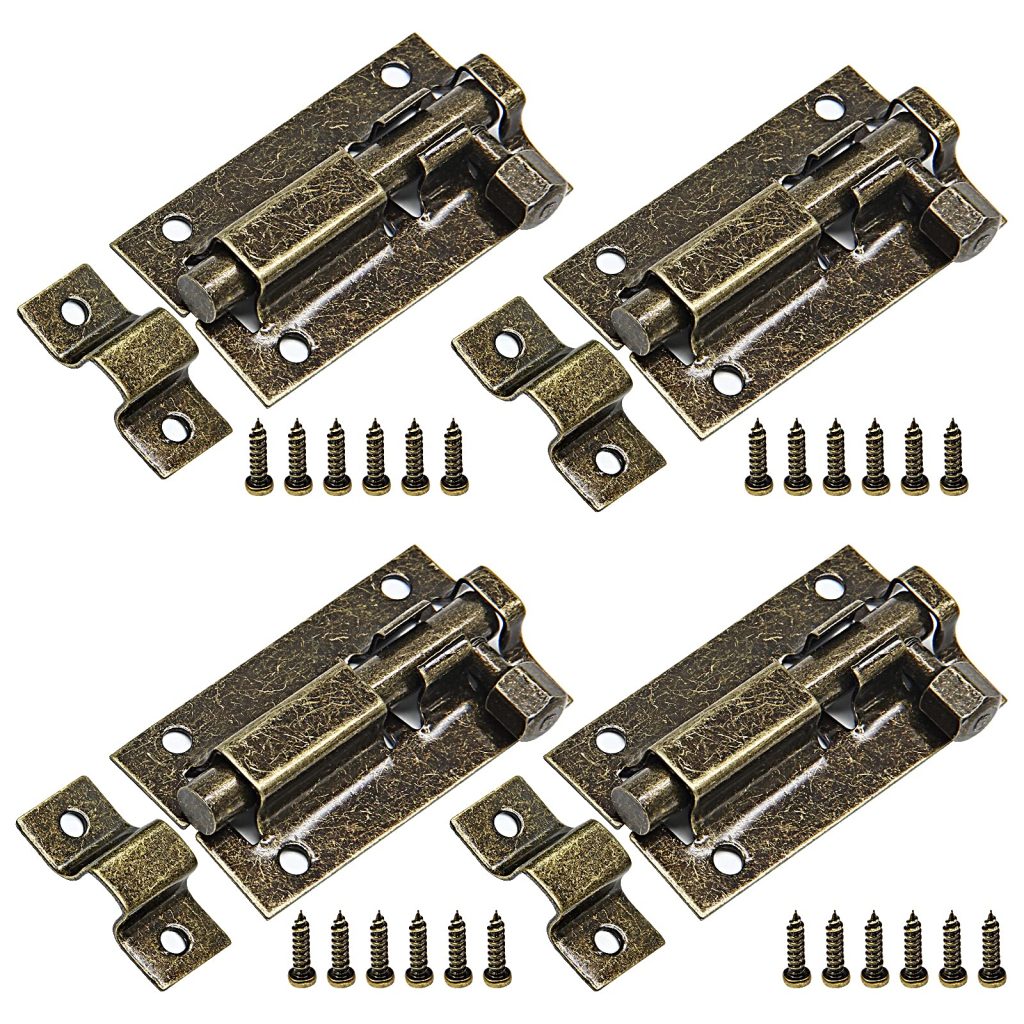
Bronze latches are more expensive than other materials. They offer a versatile appearance that complements various interior styles. Bronze latches are resistant to chipping and rust, making them durable. However, they come with a higher price tag.
Chrome
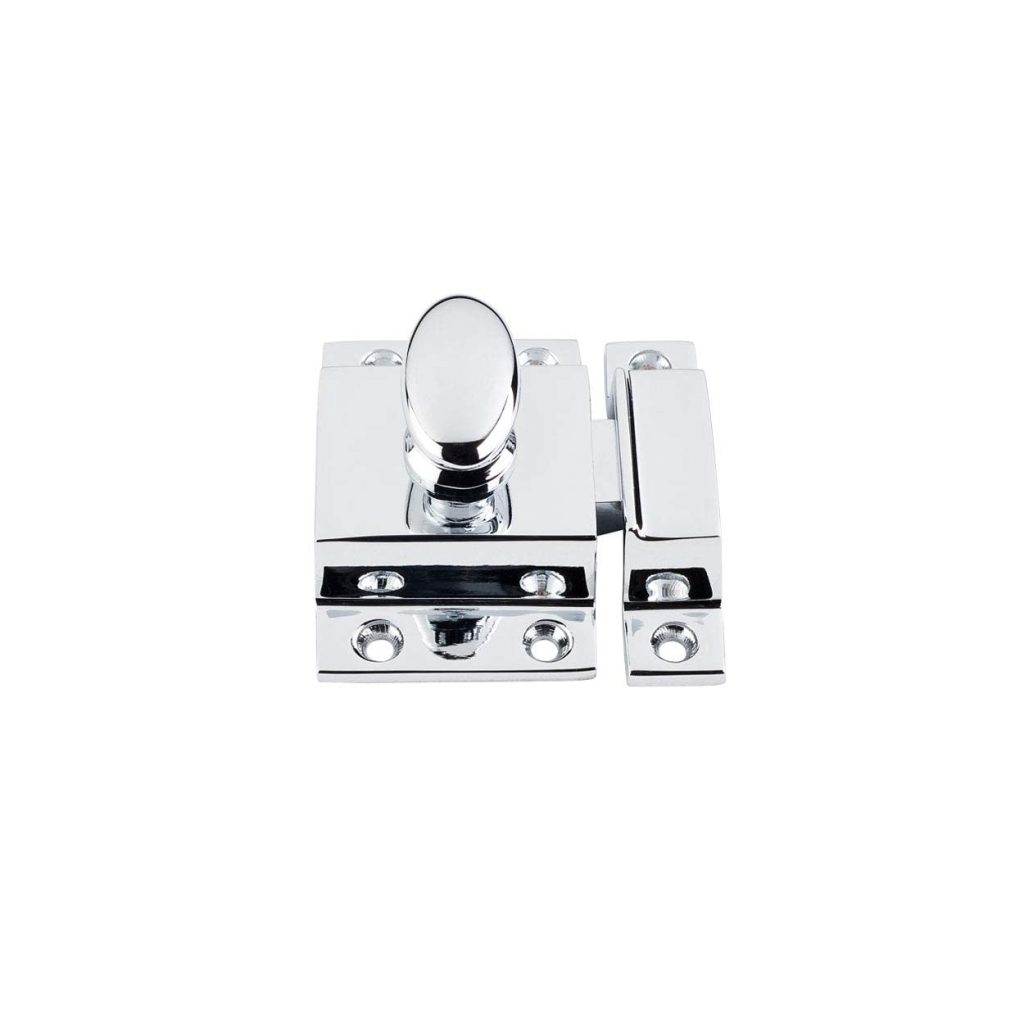
Chrome latches are commonly found in the market and are chosen for their shiny appearance. However, compared to stainless steel, chrome is less durable and more susceptible to scratches and chips over time. If durability is a priority, other material options may be more suitable.
Iron
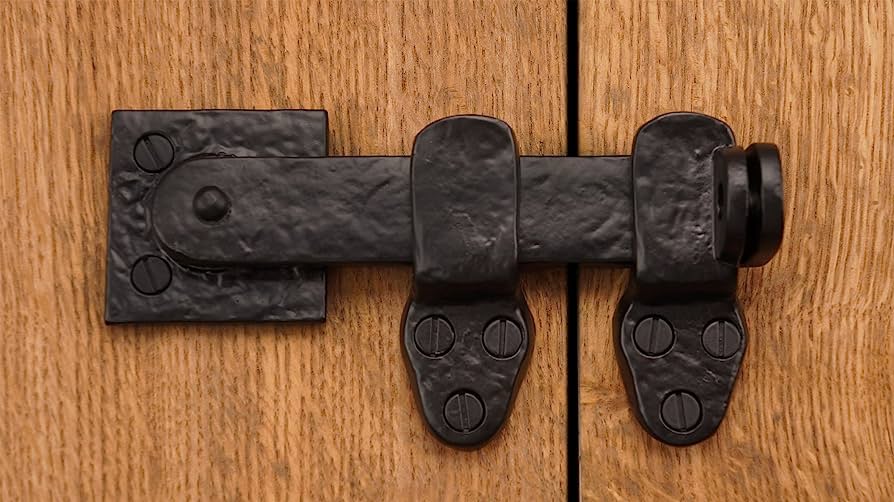
Iron latches are commonly used for both internal and external applications. They feature a black powder coating that protects the metal from the elements and adds a classic look. Iron latches are susceptible to rust in certain environments, but they are generally durable and long-lasting.
Stainless Steel
Door Locks Hasp Latch, 5 Inch Stainless Steel Safety Packlock Clasp Hasp Lock Latch, Extra Thick Gate Lock Hasp with Screws Brushed Finish 2 Pack (5inch)
Stainless steel latches are similar in appearance to aluminum latches. However, stainless steel offers high durability and resistance to pressure. It is also resistant to corrosion, making it an excellent choice for those dealing with rust issues. Stainless steel latches have a modern and sleek look.
Conclusion
Whether you need an internal or external door latch, there are plenty of options to choose from. While many latches serve the same basic function, each type has its unique features and advantages. With the wide variety of latch types available, you can find the perfect latch to suit your specific needs.
